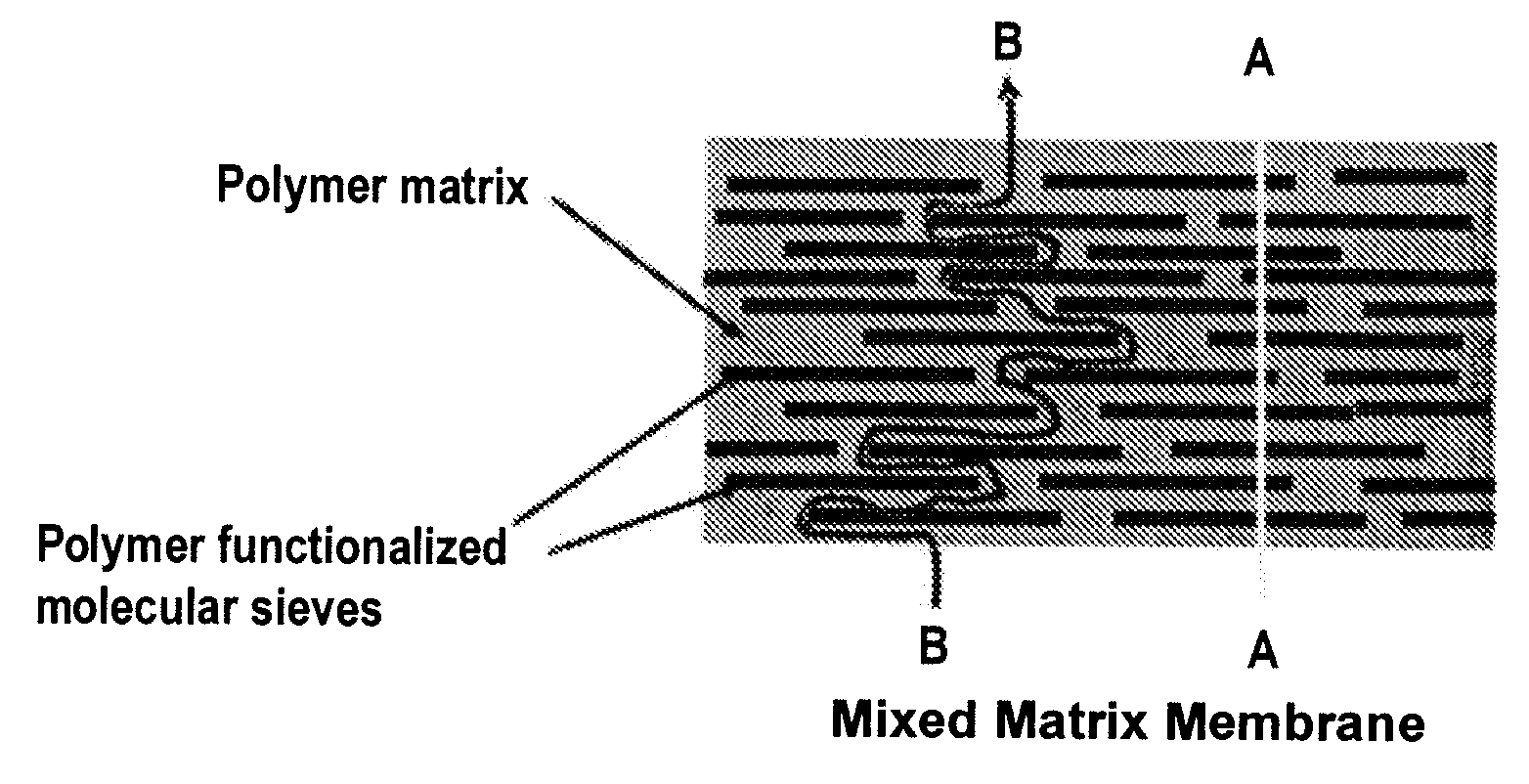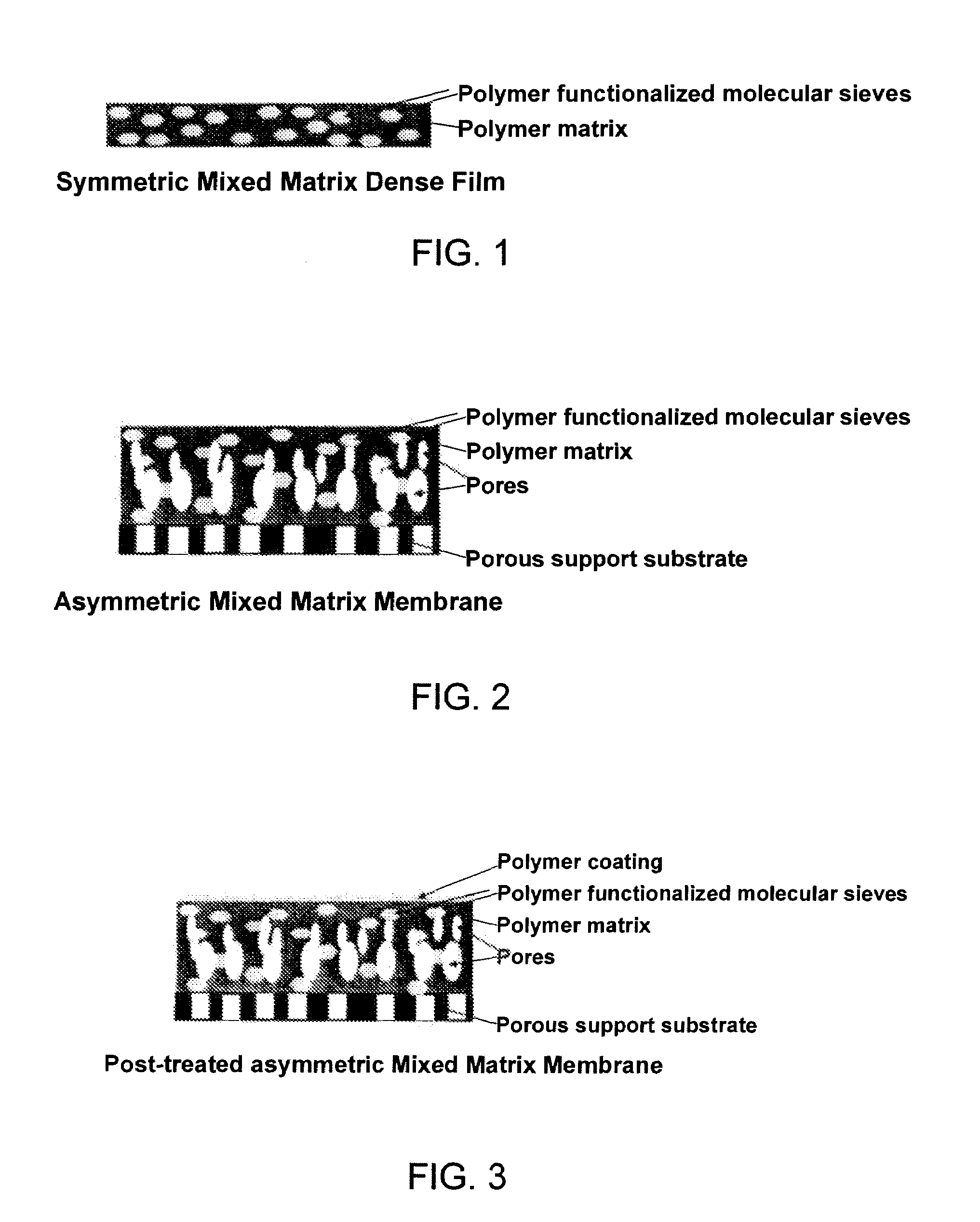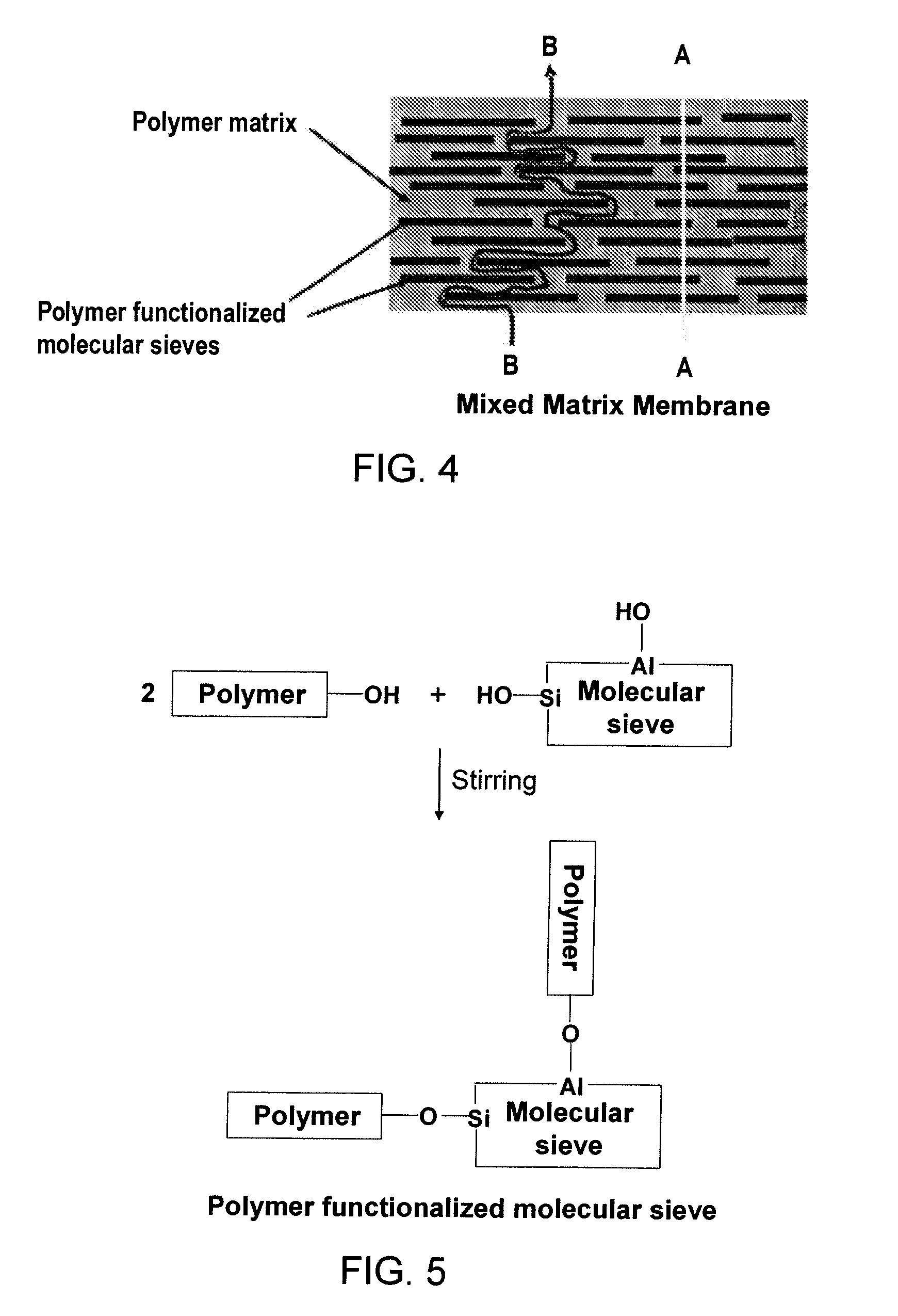Polymer Functionalized Molecular Sieve/Polymer Mixed Matrix Membranes
a molecular sieve and functional technology, applied in the direction of dispersed particle separation, separation process, chemical apparatus and processes, etc., can solve the problems of difficult large-scale manufacturing, low permeability of polymers, and current polymeric membrane materials that seem to have reached limits, etc., to achieve sufficient flux and selectivity, reduce sulfur content, and improve economics
- Summary
- Abstract
- Description
- Claims
- Application Information
AI Technical Summary
Benefits of technology
Problems solved by technology
Method used
Image
Examples
example 1
Preparation of “Control” poly(DSDA-TMMDA) Polymer Dense Film
[0081]7.2 g of poly(DSDA-TMMDA) polyimide polymer (FIG. 8) and 0.8 g of polyethersulfone (PES) were dissolved in a solvent mixture of 14.0 g of NMP and 20.6 g of 1,3-dioxolane. The mixture was mechanically stirred for 3 hours to form a homogeneous casting dope. The resulting homogeneous casting dope was allowed to degas overnight. A “control” poly(DSDA-TMMDA) polymer dense film was prepared from the bubble free casting dope on a clean glass plate using a doctor knife with a 20-mil gap. The dense film together with the glass plate was then put into a vacuum oven. The solvents were removed by slowly increasing the vacuum and the temperature of the vacuum oven. Finally, the dense film was dried at 200° C. under vacuum for at least 48 hours to completely remove the residual solvents to form the “control” poly(DSDA-TMMDA) polymer dense film (abbreviated as “control” poly(DSDA-TMMDA) in Tables 1 and 2, and FIGS. 13 and 14).
example 2
Preparation of 10% AlPO-14 / PES / poly(DSDA-TMMDA) Mixed Matrix Dense Film
[0082]A polyethersulfone (PES) functionalized AlPO-14 / poly(DSDA-TMMDA) mixed matrix dense film containing 10 wt-% of dispersed AlPO-14 molecular sieve fillers in a poly(DSDA-TMMDA) polyimide continuous matrix (10% AlPO-14 / PES / poly(DSDA-TMMDA)) was prepared as follows:
[0083]0.8 g of AlPO-14 molecular sieves were dispersed in a mixture of 14.0 g of NMP and 20.6 g of 1,3-dioxolane by mechanical stirring and ultrasonication for 1 hour to form a slurry. Then 0.8 g of PES was added to functionalize AlPO-14 molecular sieves in the slurry. The slurry was stirred for at least 1 hour to completely dissolve the PES polymer and to functionalize the outer surface of the AlPO-14 molecular sieve. After that, 7.2 g of poly(DSDA-TMMDA) polyimide polymer was added to the slurry and the resulting mixture was stirred for another 2 hour to form a stable casting dope containing 10 wt-% of dispersed PES functionalized AlPO-14 molecular...
example 3
Preparation of 40% AlPO-14 / PES / poly(DSDA-TMMDA) Mixed Matrix Dense Film
[0085]A 40% AlPO-14 / PES / poly(DSDA-TMMDA) mixed matrix dense film (abbreviated as 40% AlPO-14 / PES / poly(DSDA-TMMDA) in Tables 1 and 2, and FIGS. 13 and 14) was prepared using similar procedures as described in Example 2, but the weight ratio of AlPO-14 to poly(DSDA-TMMDA) and PES is 40:100.
PUM
 Login to View More
Login to View More Abstract
Description
Claims
Application Information
 Login to View More
Login to View More - R&D
- Intellectual Property
- Life Sciences
- Materials
- Tech Scout
- Unparalleled Data Quality
- Higher Quality Content
- 60% Fewer Hallucinations
Browse by: Latest US Patents, China's latest patents, Technical Efficacy Thesaurus, Application Domain, Technology Topic, Popular Technical Reports.
© 2025 PatSnap. All rights reserved.Legal|Privacy policy|Modern Slavery Act Transparency Statement|Sitemap|About US| Contact US: help@patsnap.com



